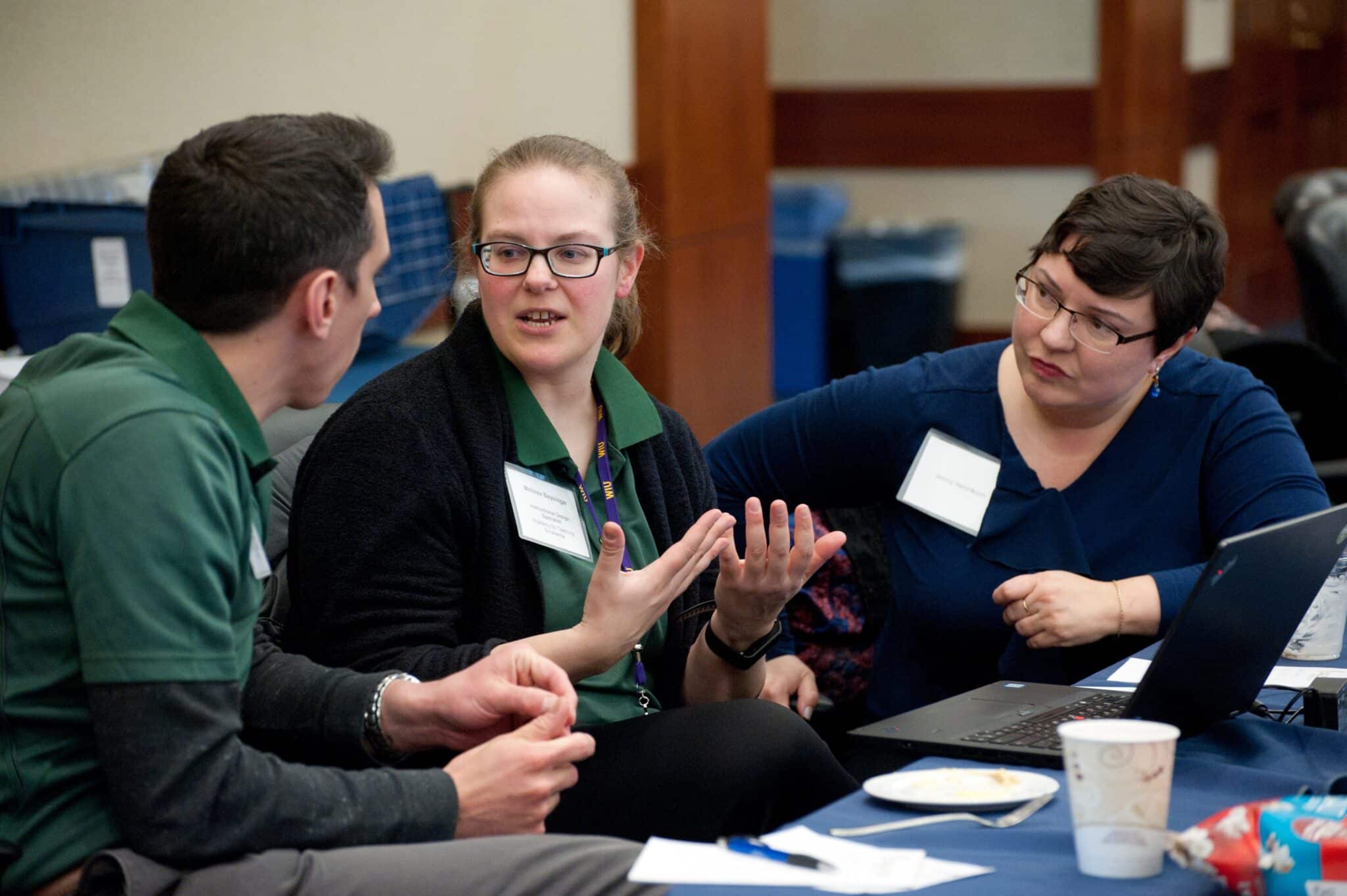With help from their professional learning center, faculty at Harper College have developed an engaging and effective way to examine their teaching and learning practice and take steps to improve students’ experiences. Through their Small Group Instructional Feedback (SGIF) process, students are positioned as partners in improving teaching and learning — an effort that has been shown to benefit both faculty and students.
CAPTURING THE STUDENT PERSPECTIVE
In 2019, Harper College’s Academy for Teaching Excellence — a well-established source of innovative faculty professional learning activities — needed to consider solutions to a problem when they saw a steep decline in the response rate when its Student Opinionaires moved online. Many at the college were concerned that they now lacked a reliable mechanism to systematically capture student input. The Academy’s faculty and administrative leaders wanted to improve how the college gathered students’ feedback and how it was used to inform professional learning and instructional improvement.
Academy leaders learned about SGIF, in which faculty volunteer to be informally observed by a faculty peer as they teach. The faculty observer spends the final 30 minutes of class time engaging students without the instructor present, asking students to respond individually, in small groups, and as a whole class, to four questions:
- What helps your learning?
- What hinders your learning?
- What can the instructor do to improve your learning?
- What can you do to improve your learning?
From there, the observer writes a confidential report and meets with their faculty partner to discuss and consider ways to make positive change. In a crucial last step, the instructor meets with students to discuss ways that both students and the instructor can make changes to support learning and success for all.
Photo courtesy of Harper College.
SUPPORTING FACULTY THROUGH PEER COLLABORATION
The Academy’s leaders launched a working group to learn more about SGIF and develop campus protocols. This group included Academy leadership and instructional design staff, members of the Academy’s advisory committee, and faculty members. They read research and developed a workshop in which faculty would pair up, learn about the process, and visit each other’s classes to pilot it. This design represented an important opportunity for the Academy to support faculty members through peer collaboration where faculty would leverage their own expertise to support their peers rather than an approach that might privilege Academy staff expertise.
Given that this process involves faculty visiting and giving feedback on each other’s classes, the working group sought faculty who would be comfortable being vulnerable. The Academy offered a workshop that provided an overview of the research on SGIF, the rationale to implement this process at the college, and step-by-step modeling of what the process looks like in the classroom.
One of the most challenging aspects they found was to learn how to engage with students in a colleague’s classroom, quickly building rapport, and listening carefully to be able to gather authentic feedback. Some faculty reported that they want to respond to the student feedback on behalf of their colleague. But that is not their role in this moment. If they instead created an open and safe space for the SGIF process, then mid-semester student feedback was a more powerful force in informing professional development and improving learning-teaching practice.
SCALING SUPPORT
The exploratory process led the Academy to begin offering SGIF on a broader scale. The working group created documents and a short video they could use to promote this professional learning opportunity to faculty across the college.
Faculty and student response to the program has been highly positive, suggesting that SGIF presents meaningful opportunities for faculty at all career stages to partner with colleagues and students as they reflect on their practice. “What I found most valuable was the chance to get feedback from students mid-semester, instead of after the semester,” said math professor Lisa Blaylock. “That way I could make adjustments, within reason, to give students that feeling of efficacy and engagement and hopefully improve student learning.”
Meanwhile, a student survey found that 87 percent of students reported that the SGIF process “favorably impacted” the learning environment in the course. At the same time, substantial majorities of students reported that the process improved their understanding of assignments and their focus on preparing to come to class. For example, 72 percent of students felt that the process favorably impacted their own “motivation to excel.” Harper is now building capacity to offer this service to all interested faculty.
Read other case studies in ATD’s Teaching & Learning Toolkit: A Research-Based Guide to Building a Culture of Teaching & Learning Excellence.

